
格瓦拉--邪恶的人/邪恶的影片 “Che:” Bad Movie About A Bad Guy
“Che:” Bad Movie About A Bad Guy
by Joe Lima
It would take sixteen hours to even begin to inventory the problems of Steven Soderbergh’s “Che,” a bad movie about a bad guy, the Argentine Ernesto “Che” Guevara. The “Roadshow Edition” that I endured at the Nuart Theatre in Los Angeles, clocks in at 4 hrs, 23 minutes in length. The film is divided into two overlong parts, the first dealing with the Cuban Revolutionary War, the second dealing with Guevara’s Bolivian disaster.
An hour of this movie is tedious; four hours of it sends one into a coma deeper than that of Fidel himself. The guy sitting behind me at the Nuart who, judging from his intermission cell-phone conversation is an enthusiastic Che lover, snored during Che’s Bolivian martyrdom. So historical questions aside, does the movie succeed as entertainment? No. It bores.
Let me say some nice things about the film. There is some lovely cinematography. There are nifty opening graphics of a map pointing out the various provinces of Cuba, although when the graphics re-appear after intermission and proceed to point out every single country in South America, it feels like a fourth grade geography lesson. Soderbergh seems to think that his audience is composed of idiots. I’m finished being nice, by the way.
Benicio Del Toro, a talented actor, is miscast as Ernesto Guevara; he has none of the cocky swagger and sarcastic humor of the real Che. He looks chronically depressed throughout the film. No one would follow Del Toro’s Che, except to a pharmacy to make sure he refilled his Zoloft.
At times the other actors, who unlike Del Toro are portraying Cubans, don’t even seem remotely Cuban; at other times the attempts of these same actors to behave and sound Cubanazo, chico, are hokey and forced.
But “Che” fails on a much deeper level. It attempts to depict actual historical events, the effects of which still play out today and affect millions of people. Does the movie tell the truth? It barely even tries. It is in this failure to connect with historic truth that the film sinks from being a mere failure to being an ugly lie.
By way of full disclosure, let me tell you a little about my background on this issue. My father comes from Cuba. Dad was an ardent Revolutionary as a young man, and as late as the summer of 1960 as a college student in Louisiana was still defending Castro, even insisting, in an interview published in Baton Rouge’s State Times, that Castro was not a Communist. Abuelo and Abuela, my grandparents, and Jorge and Ricardo, my uncles, all lived in Cuba in 1958, in Las Villas Province, at the Ingenio Escambray sugar factory, which my grandfather managed. All initially believed in the Revolution. Abuelo worked clandestinely for the anti-Batista group Directorio Estudiantil, through which he met a 30-year-old Argentine named Ernesto Guevara Serna, nicknamed “el Che.” Las Villas Province proved to be vital to the success of the Revolution, as it was where the various feuding anti-Batista groups, among them the Directorio, hammered out their differences. When Guevara needed to meet with Rolando Cubelas, head of the Directorio, Che asked Abuelo to arrange the meeting. The meeting of Guevara and Cubelas is briefly depicted in this film. Uncle Jorge snapped a photograph of Abuelo standing next to Guevara, taken in the crucial month of October 1958, in the mountains of Escambray (see below):

My grandfather, second from left, with Che Guevara. Also pictured: Paco Tejeda, left, and Pedrito Nodal, right.
In an interview, Soderbergh quoted Che’s Castro-approved biographer Jon Lee Anderson as saying, “there are a million Ches. He means something different to everyone.” This is not only wrong, it is nonsense, and it perfectly sums up the kind of divorced-from-reality magical thinking that plagues Hollywood today and results in so many bad movies. There are a million STORIES about “el Che,” but there was only one living, breathing Ernesto Guevara.
There was also only one Villaya. Who was Villaya, you ask? Villaya does not appear in this film. He was not an important figure in Cuban history, but his death symbolizes for me the troubled nature of the Cuban Revolution, so please indulge my digression.
In late December 1958, the day after Che’s column, Columna Ocho Ciro Redondo, took the city of Santa Clara, Abuelo told the family that he needed to go see Che Guevara. Uncle Ricardo, then twelve, asked to go along. They drove the hour or so from Escambray sugar mill to Santa Clara in the mill’s Willys Jeep and pulled into the rebel-occupied army barracks, near the stables, parking behind a flatbed truck. As they parked, they heard the sound of rifle fire. Abuelo and Ricardo turned to their left, toward the stables, to see four men with Springfield .30 caliber rifles. It was a Revolutionary firing squad, and they had just done their job. There was a body on the hay-covered dirt floor of the stables. There was no need for a “tiro de gracia,” a mercy shot, to finish the victim off, as they had all fired at the head; the head was gone. They heaved the body up onto the flatbed truck, the body still jerking. “I must have been white with shock,” Tio Ricardo told me. Abuelo, hoping to minimize the trauma of this atrocity on his boy, asked one of the executioners, “who was that man you killed?” The rebel answered, “Villaya. He was the head chivato for the town of Santa Clara.” “Chivato” is Cuban for “snitch.” “A bad guy,” Abuelo told Tio Ricardo, hoping to help the boy make peace with what he had just seen. They walked toward the barracks where Guevara and Abuelo had their meeting, and the truck drove away with Villaya.
Perhaps Villaya had been a bad guy, but he was merely a snitch. One day after Che Guevara took Santa Clara, he had a guy shot for being a snitch. I cannot comment on Villaya’s guilt or innocence. I simply wish to point out that the execution, with no due process, of Villaya was a worse crime than what Villaya was accused of in the first place. I don’t know if there was a trial, but 24 hours between arrest and execution is not enough time to prepare a defense. Most troubling for me is this: if being a snitch for a dictatorship merits execution, the mind boggles at how many bullets it would take to execute every snitch in Cuba today, where there is a chivato on every block, officially organized into “Committees for the Defense of the Revolution,” and where the snitches’ reports are collected and reviewed in the Ministry of the Interior, a big building in Havana with Che’s picture on it. It saddens me to report that at the time of this execution, Abuelo, an honorable, intelligent and compassionate man, condoned Villaya’s execution, as he initially condoned the executions of other Batistianos. Good people can fall for bad ideas, and Abuelo did, although he never fell for Communism. Abuelo was too trusting, perhaps, but he wasn’t a fool.
Villaya’s story brings home to me the fact that the Cuban Revolution was not The Three Musketeers, Star Wars, or the Magnificent Seven. Real people died.
THE UNASKED QUESTION: WAS THE WAR WORTH IT?
Soderbergh completely skips the issue of how Fidel, Raul and Che behaved in power, thus evading the question, what did all this killing accomplish? The movie makes much of the death at Santa Clara of the 23-year-old Captain Roberto Rodríguez Fernández, a rebel in Che’s column nicknamed “el Vaquerito,” “the little cowboy,” because he was short, and wore cowboy boots. Abuelo, Jorge and Ricardo briefly met El Vaquerito after the rebels took the town of Placetas. El Vaquerito was leader of Guevara’s “Suicide Squad,” the vanguard who went into combat first. He had a reputation for being fearless; Jorge remembers the boy as a guajiro, a country boy; amiable, humble. Some in the audience practically sobbed when Vaquerito died. His death was very painful for them, don’t you know. I suspect they have no idea just how sad Vaquerito’s death really is. Would el Vaquerito have approved of Cuba becoming a communist dictatorship because of his efforts? I don’t know. Maybe. But how many kids who announce at the age of 23, “hey everybody, I’m a communist!” still say that at 33? According to Anderson, Che himself wrote, “Vaquerito did not have a political idea in his head, nor did he seem to be anything other than a healthy, happy boy, who saw all of this as a marvelous adventure.” Doesn’t sound like a commie to me. Would he have joined the guerrillas if he knew that the Cuba he died at 23 to help create would be one in which the Castros ruled with absolute power into Fidel’s eighties and Raul’s seventies, that Cuba would have one of the highest suicide rates in Latin America, that people would be so desperate to leave that they would take to the shark-infested waters of the Gulf in rafts, inner tubes, even floating cars, just to get the hell out? The tragedy of el Vaquerito is not just that of a brave young man who was killed; it is the tragedy of a boy whose life was used by sinister men to seize power. One of those men was Che Guevara.
A LIE
Pre-Revolutionary Cuba is predictably presented in this film as a screamingly poor, fifth-world country. It seems that every other character is illiterate. People who were there remember it differently, and United Nations statistics from the period tell a different story: Cuba was in fact the fourth most literate country in Latin America. “A people that don’t know how to read and write are an easy people to fool,” scolds Del Toro, index finger in the air. Ironic, that, considering how the Castros have always used the written word to fool people in Cuba and all over the world, via surrogates like Anderson, who blandly parrot the official version of Cuban history. Furthermore, the 100% literacy rate that the Cuban government claims to have accomplished is accompanied by 100% censorship of what Cubans are allowed to read, and of what they are allowed to write. Another digression: statistics say that 28 percent of the State of Louisiana is functionally illiterate today. I’d like to ask Steven Soderbergh, whose father was once Dean of the College of Education at Louisiana State University, if the scandal of illiteracy in Louisiana would justify turning Louisiana into a communist dictatorship, shooting all the cops, and compelling teachers to teach the dictatorship’s version of history. Of course, it wouldn’t. But this is precisely the twisted rationale that the Cuban government uses to justify its now fifty-year stranglehold on power.
ANOTHER LIE
At the end of the first half of the film, Che orders a rebel to return a red convertible the rebel has plundered. Che was not a plunderer, you see. Even if this incident is factually true, its inclusion in this film is a lie, because the film neglects to tell us that shortly after the war, Guevara moved into an extravagant beachfront mansion in Tarara, a few miles outside of Havana (after kicking out the previous owner). In March of 1959, Che lamely explained in a letter to future exile Carlos Franqui, then editor of the newspaper Revolucion, that “I am ill…due to my revolutionary work…Doctors advised a house at a distance (from Havana), so as to avoid too many visitors and I was lent this one by the Ministry of Property Recovery…” *
I wonder if Che’s doctors also advised that Che wear that famous Rolex of his.
As I’ve previously mentioned, Soderbergh’s Che is a four-hour film. I’ll have more to say about it on Tuesday.
INTERMISSION
*The letter was reproduced in the English edition of Guevara’s “Reminiscences of the Cuban Revolutionary War,” published in 1968 by Monthly Review Press and translated by Victoria Ortiz.
--------------------------------------------------------

Part II: “Che:” Bad Movie About A Bad Guy Gets Worse
by Joe Lima
“How I would like to rise to power just to unmask cowards and lackeys of every sort and squash their snouts in their own filth.”
Che Guevara, Bolivia, September 8, 1967.
“No rapport had been established with the locals…” Anderson, p. 722
As I said in part one of my review of Soderbergh’s “Che,” The film gives us no idea of what happened after the Cuban Revolutionary government took power. Quite a lot did happen. We all know about the Bay of Pigs invasion, which deserves its own four-hour movie, hopefully directed by someone other than Soderbergh. We also all know that hundreds of thousands of people left Cuba in the early 1960s. People have never stopped leaving.
What’s less known to outsiders is that under Castro’s command, the Cuban Revolution began, very early on, to eat its own. The highest rank in the Revolutionary army was then the rank of “Comandante.” Here’s what happened to a few Revolutionary Comandantes: In October 1959, Comandante Huber Matos, who is omitted from this film, criticizes the influence of Communists in the Revolutionary Government, and tenders his resignation. He is arrested, and serves twenty years in prison, during which time he endures severe torture. The dashing Comandante Camilo Cienfuegos is killed in an airplane crash within a week of the arrest of Huber Matos. The wreckage has never been found. Matos, who along with Camilo flanks Fidel in the famous photographs of Fidel’s entry into Havana, is among many who have never accepted the plane crash story. In March of 1961, Comandante William Morgan, of Cleveland, Ohio, also omitted from this film, is arrested and executed.
Revolutionaries were now being eliminated as well, not just Batistianos. In this dangerous atmosphere of Revolutionary cannibalism, Che recklessly blasted the Soviet Union in a speech in Algiers in 1965. Guevara was famously an admirer of Mao; Fidel in those days was firmly in the Soviet column, and with good reason: the Soviets were pumping massive amounts of capital into Cuba. In Cuba, when you disagree with Fidel, guess who wins? Che’s attack on the absolutely vital Soviet Sugar Daddy was nothing short of foolish.
Without knowledge of these important events, largely omitted from the film, one simply cannot observe Guevara’s Bolivian debacle from an informed perspective.
Furthermore, we have to understand that the Cuban Revolution has always lied, beginning in the fifties with the notorious “we are not communists” (and yes, even Guevara told this whopper, telling Abuelo, my grandfather, that he believed in democracy, and that there would be elections within six months of the overthrow of Batista) all the way through to 2006’s “Raul will be temporarily in charge.” The official account, which this movie rehashes, of the Bolivian campaign, is therefore suspect.
However, a sliver of truth does manage to peek through the darkness of disinformation in a scene in which Guevara, asthmatic, undernourished, gaining no traction in his insurgency against the Bolivian government and unable to make his horse move another inch, slides off of the poor creature and begins stabbing her. (This event, by the way, apparently really happened). Some in the audience moaned empathetically, as if the whole thing was so, so sad: first, el Vaquerito, now the horse! Yes, the incident is sad, but it’s not merely sad. It’s abnormal, terrifying. What kind of sadist stabs a horse just because he can’t make it walk? The answer is this: the same kind of sadist that presides over a gulag in which executions are carried out with dreadful, cold efficiency.
And Che did preside over a gulag. He was the first Revolutionary Comandante in charge of La Cabaña fortress, the old Spanish fort that became ground zero in the Cuban gulag archipelago. My father was home from college for the Christmas holidays of 1958-59, and he, a friend and Abuelo visited Che Guevara at La Cabaña on or before January 5th, 1959. As they were driven to Guevara’s office, Dad heard multiple volleys of rifle fire. Wondering why rifles were being fired, when after all the war was over, Dad asked a Captain Sanchez, who was driving them to the main barracks where Guevara had his office, “Captain, what are those shots?” Sanchez replied, “Ah, we’re shooting those sons of bitches,” meaning officers and soldiers of Batista’s army. Che had taken charge of La Cabaña on January 3rd. Again, hardly time for due process. Before long, the prison cells of La Cabaña began to fill not with Batistianos, but with former comrades of Fidel and Che. My cousin, Oscar Plá began his odyssey through the Cuban gulag at the age of 15, in October of 1961, and finally emerged for good at the age of 33; his initial incarceration was in La Cabaña. Oscar knew no fewer than eight Revolutionary Comandantes in La Cabaña.
In prison Oscar got to know several people who had direct contact with el Che. Two, Bernardo Paradela, and Raul Venta del Mazo, both veterans of the struggle against Batista who later turned against the Revolution, were hung upside down for over a month and interrogated. Guevara came to taunt them every single day of their ordeal. Oscar gave me the name of another man whom he had met in Gallery Seven of La Cabaña, a man who had been a Revolutionary Postal Service bureaucrat with whom Guevara had quarreled, then personally sentenced to torture. This poor wretch had lost fifty pounds in 30 days; he was never well liked by the other prisoners because even as a political prisoner he remained a committed ideological communist. The man was released only after Guevara was killed in Bolivia. This fellow is apparently still in Cuba; I have found a phone number for the man, which I am not going to call. Nor am I going to print his name. These are just three men; according to Sociologist Juan Clark, the population of political prisoners in Cuba in the 1960s swelled to 60,000, among them, women and children.
This is why the most jarringly false moment in the film comes in the first half when someone mentions Stalinists in the Cuban Communist Party. Guevara asks, “Stalinists?” as if to say subtextually, “Hold on here, there are Stalinists in this movement? Listen buddy, I ain’t down with no Stalinists.” This is an absolute howler, inanity of a very low order. Che Guevara was in fact the most Stalinist of all the early Revolutionary Comandantes, with the exception of Raul Castro himself. There is a reason why Guevara was put in charge of La Cabaña, and not Camilo, or Huber Matos. But there’s no room for this ugly reality in Soderbergh’s film about Guevara, whom we are led to believe was kind as Saint Francis of Assisi. But back to Bolivia.
Cinematically speaking, the problem with the Bolivian portion of the film is that there is simply not two hours of movie to be squeezed from this disaster. If the first two hours of the film are boring, the second two are stuporific.
Historically speaking, Guevara’s attempt to incite an insurrection among the Indigenous people of the Ñancahuazú region could never have succeeded. Many of these people didn’t speak Spanish, and the Cuban guerrillas did not speak the Guaraní dialect of the region. One can only imagine what the Indigenous Bolivians thought of the loud, smelly, bearded foreigners who suddenly appeared in their midst: “Saludos, comrades, we’re here to liberate you. Do you have anything to eat? Listen, don’t tell anyone you saw us, or we’ll kill you. By the way, I am not Che Guevara. What’s that? Oh, you don’t speak Spanish?”
Things deteriorated from there. No less than the now-exiled Dariel Alarcon, codenamed “Benigno” in Bolivia, and one of only three survivors of the expedition, today believes that Fidel set Che and the rest of his guerrillas up for failure, and death. He also has interesting things to say about the death of Camilo Cienfuegos.*
The grim photos of Guevara’s emaciated corpse stretched out in a washbasin lead one to wonder how long would it have taken for Guevara to simply starve in Bolivia. Contrast that with the pictures of the happy, healthy guerrillas who rolled into Havana in January of 1959. Photos of Fidel in particular are hilarious. He’s a good 60 pounds overweight. Whatever “the Cuban experience” as Guevara referred to the guerrilla war of 1956-1959 was, it was nothing like Bolivia, and Guevara’s experiences in Cuba in no way prepared him for what he encountered in South America.
At the end of the film, a Bolivian soldier asks Guevara if there was religion in Cuba. Guevara answers that yes, there are many religions in Cuba. Guevara’s answer here is, ahem, incomplete, and I wish to address this issue. Apparently, the Bolivian government and military had told the peasantry, and the soldiers, that under a Cuban-style regime, the Bolivian people would not be free to practice their religion. Soderbergh would have us believe that this is some vile calumny against the Cuban Revolution. In fact, religious persecution in Cuba at the time was a terrifying reality. From training fire hoses on a group of twelve to fourteen year old girls on their way into the Church of La Caridad del Cobre, a place sacred to Cubans since the 1600s, to teach Catechism class (this happened to my cousin Oscar’s wife, Miriam) to the internment of thousands in the UMAP camps of 1965 – 1968, where Jehova’s Witnesses in particular had it very rough, tortured with fire ants until they renounced their faith, religion was under fire in Cuba.
A more honest answer from Che would have been, “yes, there is religion in Cuba, but we’re doing everything we can to get rid of it.” The Bolivians had every right to fear for their religion, and their culture, under a Cuban-type regime.
At the end of the film, the Bolivians treat Che Guevara to exactly the same justice that the real Ernesto Guevara gave to Villaya, almost eight years earlier. Not exactly a miscarriage of justice.
I have just one more thing I’d like to say about Mr. Soderbergh and Mr. Del Toro. I don’t mean this maliciously, as I think that the experience would be very good for the emotional, intellectual and artistic growth of these two men. I wish that Mr. Soderbergh and Mr. Del Toro could live in Cuba, not as the pampered VIPs that they are when they visit today, but as Cubans do, with no United States Constitutional rights, with ration cards entitling them to tiny portions of provisions that the stores don’t even stock anyway, with chivatos surveilling them constantly. How long would it be before Mr. Soderbergh started sizing up inner tubes, speculating on the durability and buoyancy of them, asking himself, could I make the crossing on that? How long before Mr. Del Toro started gazing soulfully at divorced or widowed tourist women, hoping to seduce and marry one of them and get out? Only then could they see why this insipid, frivolous and pretentious movie they have made is nothing less than an insult to millions of people, who really do live like that, and who’ve lived like that their entire lives.
Maybe then, they could put their considerable talents into making a Cuba movie worth watching.
The world so needs to take off those dumb Che t-shirts, and grow up. We face serious problems, and totalitarianism isn’t a solution to any of them, even when it’s dressed up in a beret and given a wispy beard, flowing locks and a surly stare, and looks really, really cool.
By the fall of 1960 my father had changed his mind about Castro. My uncles Jorge and Ricardo came to the States in September 1961, Abuelo and Abuela got out in November. They all moved into a small house on North Street in Baton Rouge. Dad started his own consulting firm. Jorge went to work at a department store in Baton Rouge called Godchaux’s, Ricardo graduated from Baton Rouge High, and they both went on to LSU. All three of the Lima boys became not only Americans, but full-on gumbo-eating Louisianans who married and had families and successful businesses of their own. Dad married a woman with deep roots in South Louisiana, and together they raised a family of four children, of which I am the first. Dad says, “your mother is fixin’ to make some jambalaya” with a Cuban accent. Mom learned to cook black beans so tasty that Cuban-born women ask for her recipe. Nowhere but in America do cultures collide so deliciously. Abuelo was too much of a fighter to be anything other than a cheerful man; he was not a bitter man, but all his life he felt betrayed by the Revolution, which had promised free elections and a return to the Constitution of 1940.
Abuela to her last day hated beards on men.
I was out for a walk in the cool of a Southern California evening with my soon-to-be-three-year-old daughter, the great-grandchild of José Francisco Lima, and the calamitous events of now more than fifty years ago, that so shaped who I am today came into my head. How fortunate we are to be able to walk down the street and talk to each other without having to worry about being overheard by a snitch, without having to show up at public demonstrations and pantomime a revolutionary ardor that after more than half a century, nobody really feels anymore. How fortunate we are to be free of the caprices of angry, vain men who think that they are entitled to shoot people and confiscate their property. How fortunate we are, to have been born in a country where freedom of speech, freedom of religion and the right to due process are assured all of us thanks to the United States Constitution.
We didn’t have to build a raft and brave the Gulf of Mexico to get here. We lucked out: we were born here. We won the lottery. I certainly didn’t deserve to. Nobody can possibly deserve to. All we can do is thank God for it, and try to be worthy of it, by living a good life. Gratitude. Gratitude to be a free man, married to a lovely free woman, who has given me a beautiful daughter, who will grow up in a free country. Gratitude is what the Cuban experience taught me. I have a deep sense of how fortunate we as Americans are because I am just one generation removed from firing squads and re-education camps. And for creating that nightmare world of totalitarian Cuba, which I remember with a shudder even though I was spared the experience firsthand, I must credit Fidel Castro, Raul Castro, and Ernesto Guevara Serna, “el Che.”
*The Complete Bolivian Diaries of Che Guevara, Daniel James, 1968, Stein & Day
**If you speak Spanish and want to hear what Dariel Alarcon aka Benigno has to say, I urge you to watch the following video:
***If you would like to read more about political prisoners and human rights abuses in Cuba, I direct you to Armando Valladares’ “Against All Hope,” “Contra Toda Esperanza” in Spanish.






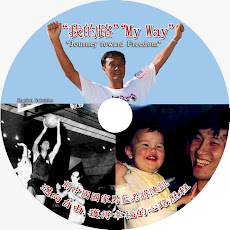


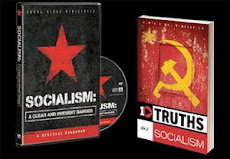




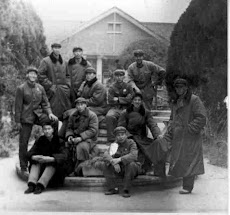


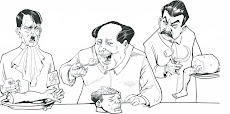
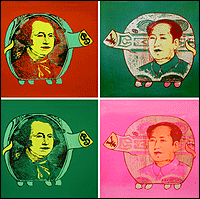
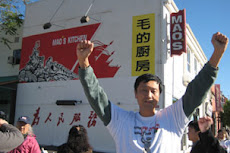


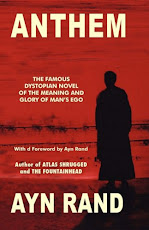










1 comment:
Thank you for your candid review. Not enough is being said by the Cuban community to contrast this movie. Where is Cuban Hollywood in all this, Andy Garcia should be the first one to take it up with Benicio and Steven.
Post a Comment